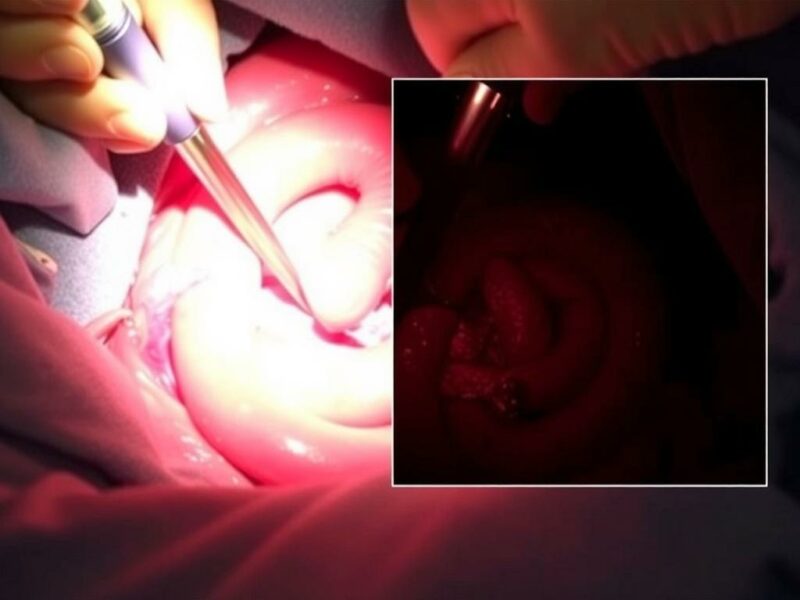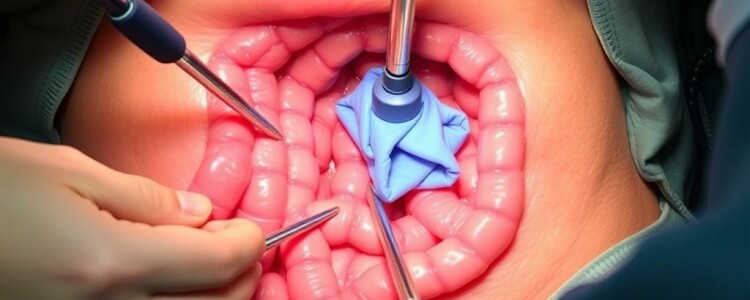Undoubtedly, appendicitis is a common emergency that leads many patients to the operating room. Fortunately, advances in surgical techniques have made the removal of the appendix safer and less invasive. One such innovation is the laparoscopic appendectomy. If you’ve ever wondered what this procedure entails, why it’s preferred in many cases, or what to expect during recovery, you’re in the right place. This comprehensive article will take you through everything you need to know about laparoscopic appendectomy in a simple, engaging, and informative way.
What Is a Laparoscopic Appendectomy?
A laparoscopic appendectomy is a minimally invasive surgical procedure used to remove an inflamed or infected appendix, known as appendicitis, through small incisions. Instead of the traditional open surgery, which involves a larger incision in the lower right abdomen, laparoscopic surgery utilizes tiny cuts just a few centimeters in size.
During the procedure, surgeons insert a laparoscope — a thin, lighted tube equipped with a camera — through one of these small incisions. This camera projects images onto a screen, allowing the surgeon to see inside the abdomen in great detail. Other specialized instruments are inserted through the additional incisions to carefully separate and remove the appendix.
The benefits of this approach are significant: reduced post-operative pain, quicker recovery times, minimal scarring, and fewer complications like infections. These advantages have made laparoscopic appendectomy the preferred treatment method for many surgeons worldwide.
When Is a Laparoscopic Appendectomy Recommended?

While laparoscopic appendectomy is a widely accepted method for removing the appendix, it is important to understand when this procedure is appropriate. Appendicitis can present in various ways, and the choice of surgical technique depends on several factors.
- Early-stage Appendicitis: When the appendix is inflamed but not yet ruptured, surgeons often recommend laparoscopic removal due to its minimally invasive nature and fast recovery.
- Complicated Appendicitis: In cases where the appendix has perforated or an abscess has formed, laparoscopic appendectomy can still be considered, but sometimes open surgery may be preferred to better manage complications.
- Patient’s Overall Health: Patients with underlying health conditions or previous abdominal surgeries may affect the decision to use laparoscopy.
- Surgeon’s Expertise: The skill and experience of the surgical team also play a crucial role in selecting the approach.
Understanding your specific situation and discussing it with your healthcare provider can help ensure you receive the best treatment option.
Open Appendectomy vs. Laparoscopic Appendectomy
To appreciate why laparoscopic appendectomy has gained popularity, it helps to compare it with the traditional open appendectomy.
| Feature | Open Appendectomy | Laparoscopic Appendectomy |
|---|---|---|
| Incision Size | Usually 2-4 inches | Three small incisions, each about 0.5-1 cm |
| Recovery Time | 2-4 weeks | 1-2 weeks |
| Postoperative Pain | Moderate to severe | Less pain and discomfort |
| Risk of Infection | Higher due to larger incision | Lower due to smaller wounds |
| Hospital Stay | 2-3 days | 1-2 days (sometimes outpatient) |
| Cosmetic Outcome | Visible scar | Minimal scarring |
This comparison highlights why laparoscopic appendectomy is becoming the standard of care for appendicitis surgery, especially in uncomplicated cases.
Preparing for a Laparoscopic Appendectomy
Preparation is an essential part of any surgery, and laparoscopic appendectomy is no exception. If you’re heading into surgery, you might be wondering how to prepare and what to expect.
First, your healthcare provider will conduct a thorough evaluation including physical exams, blood tests, and imaging studies like an ultrasound or CT scan to confirm that you have appendicitis and to assess for complications. Informed consent will be obtained once you understand the benefits and risks of the procedure.
You’ll be asked to fast, usually for at least 6 to 8 hours, before the surgery. This helps reduce the risk of complications related to anesthesia. If you’re on medications, be sure to inform your surgical team; some may need to be paused or adjusted.
On the day of surgery, you’ll change into hospital attire, and an intravenous (IV) line will be started to administer fluids and medications. Your anesthesia team will monitor you closely once you are given general anesthesia, ensuring you remain comfortable and pain-free.
What Happens During a Laparoscopic Appendectomy?
The procedure itself usually takes between 30 minutes to an hour, depending on the complexity of the case. Here is a general overview of the surgical steps:
- Insertion of the Trocar: After anesthesia, the surgeon makes a small incision near the navel and inserts a trocar to inflate the abdomen with carbon dioxide gas. This lifts the abdominal wall, creating space to work.
- Installing the Laparoscope: A laparoscope equipped with a camera is inserted through the initial incision, allowing the surgeon to see the internal organs on a monitor.
- Additional Ports: Two or three more small incisions are made to insert surgical tools.
- Dissection and Removal: The surgeon carefully isolates the appendix, cuts it from surrounding tissues and blood vessels, and removes it through one of the small incisions.
- Inspection and Closure: The abdominal cavity is inspected for bleeding or abnormalities, CO2 gas is released, and the small incisions are closed with stitches or surgical glue.
After surgery, you’ll be moved to the recovery area where nurses monitor your vital signs as you wake from anesthesia.
The Recovery Process After Laparoscopic Appendectomy

Recovery after a laparoscopic appendectomy is typically faster and less painful than after open surgery, but adequate care and attention are still needed.
Immediately after the procedure, you might feel groggy or experience mild nausea from anesthesia. Once fully awake, you may begin with clear liquids, gradually moving to solid foods as tolerated. Walking within hours of surgery is encouraged as it helps minimize complications like blood clots and promotes healing.
Most patients can go home within 24 to 48 hours after surgery. At home, managing pain with prescribed medications or over-the-counter options is common, and the small incisions will heal over a few weeks.
Tips for a Smooth Recovery
- Follow Your Doctor’s Instructions: Take medications as prescribed and attend follow-up visits.
- Keep Incisions Clean and Dry: Avoid soaking in baths until your healthcare provider confirms it is safe.
- Limit Physical Activity: Avoid heavy lifting or strenuous exercise for at least 2 to 4 weeks.
- Watch for Signs of Infection: Redness, swelling, increased pain, or discharge at the incision site require prompt medical attention.
- Gradually Return to Normal Diet: Eat balanced meals and stay hydrated.
- Stay Active: Gentle walking helps prevent stiffness and speeds recovery.
Risks and Potential Complications
As with any surgical procedure, laparoscopic appendectomy involves some risks, though they are generally low. Being aware of these helps you recognize any problems early.
| Possible Complication | Description | Frequency |
|---|---|---|
| Infection | At the incision site or inside the abdomen | Rare, but more common if appendix ruptured |
| Bleeding | Internal or external bleeding from blood vessels | Very rare |
| Injury to Nearby Organs | Damage to intestines, bladder, or blood vessels | Infrequent and often avoidable |
| Blood Clots | Deep vein thrombosis (DVT), especially with prolonged immobility | Rare if mobilization encouraged |
| Conversion to Open Surgery | If laparoscopic approach is not feasible or safe | Occurs in a minority of complicated cases |
If you experience high fever, severe abdominal pain, persistent vomiting, or swelling at incisions, contact your healthcare provider immediately.
Frequently Asked Questions About Laparoscopic Appendectomy
How long will I be in the hospital?
Most patients stay 1 to 2 days after a laparoscopic appendectomy. In some cases, where surgery is straightforward and recovery quick, discharge on the same day is possible.
Can I resume normal activities quickly?
Yes, many patients return to light activities within a few days and to work or school in about 1 to 2 weeks, depending on the individual and the nature of their job.
Will I have a large scar?
No, laparoscopic appendectomy results in three small scars, usually less than a centimeter each, which fade over time.
Is laparoscopic surgery more expensive?
Laparoscopic appendectomy can sometimes cost more due to equipment, but faster recovery and shorter hospital stays often balance out the expenses.
The Future of Appendectomy Surgery
Surgical techniques continue to evolve, with promising innovations on the horizon. Advanced laparoscopic tools, robotic-assisted surgery, and improved imaging techniques are making the procedure even safer and more efficient. Research into non-operative management of appendicitis with antibiotics alone is also ongoing but is currently reserved for select cases.
Nevertheless, laparoscopic appendectomy remains a cornerstone in the treatment of appendicitis, offering a reliable and minimally invasive option for patients worldwide.
Summary Table: Key Features of Laparoscopic Appendectomy
| Aspect | Details |
|---|---|
| Type of Surgery | Minimally invasive removal of appendix |
| Incisions | Three small cuts, 0.5-1 cm each |
| Anesthesia | General anesthesia |
| Duration | 30-60 minutes |
| Hospital Stay | Usually 1-2 days |
| Recovery Time | 1-2 weeks |
| Surgical Risks | Infection, bleeding, injury, blood clots |
Conclusion
Laparoscopic appendectomy is a remarkable advancement in surgical care that has transformed the treatment of appendicitis across the globe. Its minimally invasive nature, combined with quicker recovery times and less postoperative pain, makes it a preferred choice for both surgeons and patients in many scenarios. Whether you find yourself facing this surgery or are simply curious about modern medical practices, understanding the process, benefits, and precautions associated with laparoscopic appendectomy empowers you to make informed decisions and feel confident about the journey ahead. As medical science progresses, procedures like these continue to demonstrate how innovation can enhance healing while minimizing discomfort, offering a brighter future for patient care.



